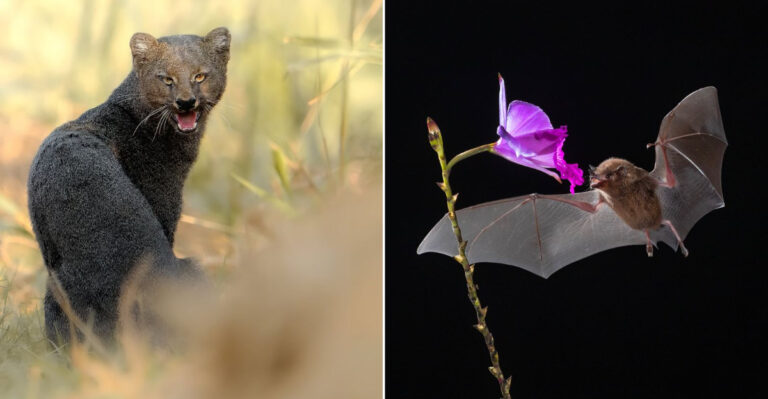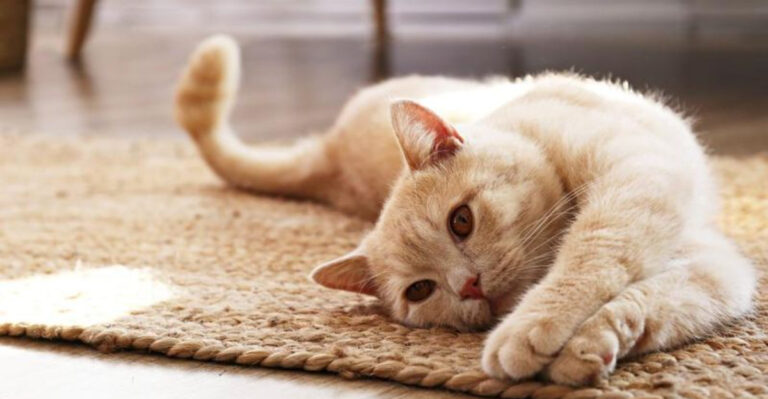13 Black Snakes You Might Spot In The U.S. (And Which Can Be Dangerous)
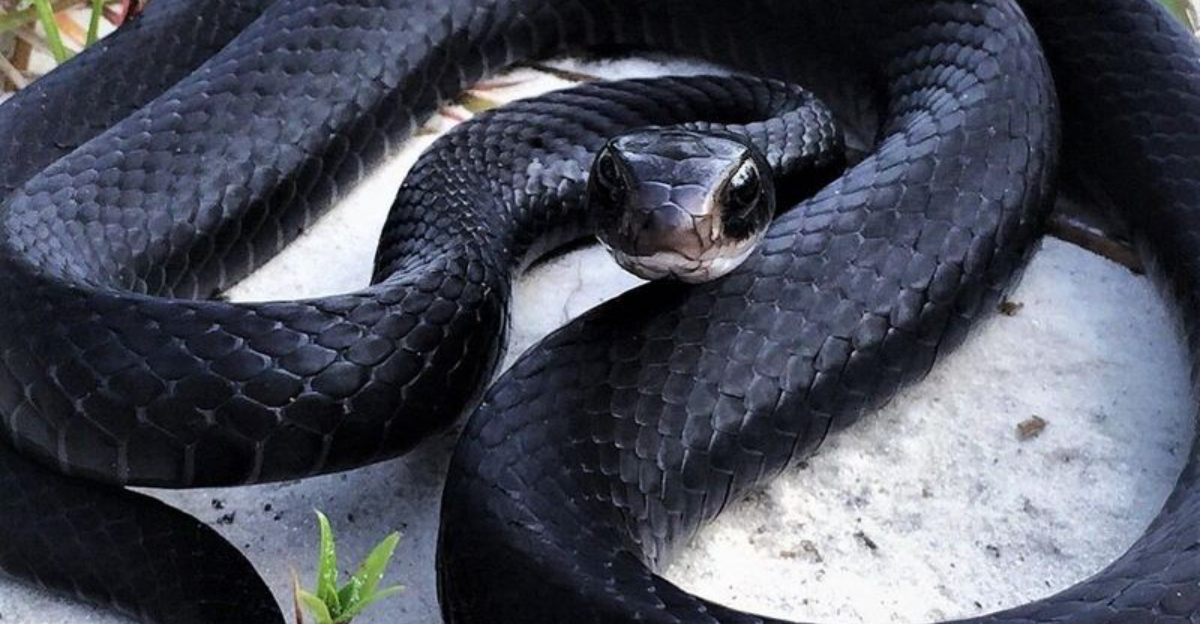
Ever spotted a dark, slithery creature while hiking or gardening? Black snakes are common across America, but telling them apart can be tricky – and some pack a dangerous bite.
Learning to identify these serpents helps keep both you and these important ecosystem members safe. Ready to meet your dark-scaled neighbors?
1. Southern Black Racer
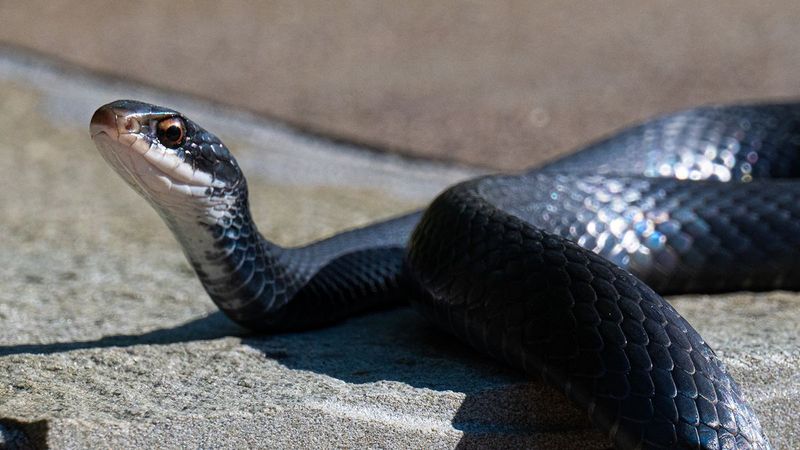
Lightning-fast and impossibly sleek, these jet-black speedsters can zip away at up to 4 mph when startled. Their slender bodies and smooth scales give them an elegant appearance.
Though intimidating when cornered (they’ll vibrate their tails and strike repeatedly), racers are harmless to humans and actually help control rodent populations.
2. Eastern Indigo Snake
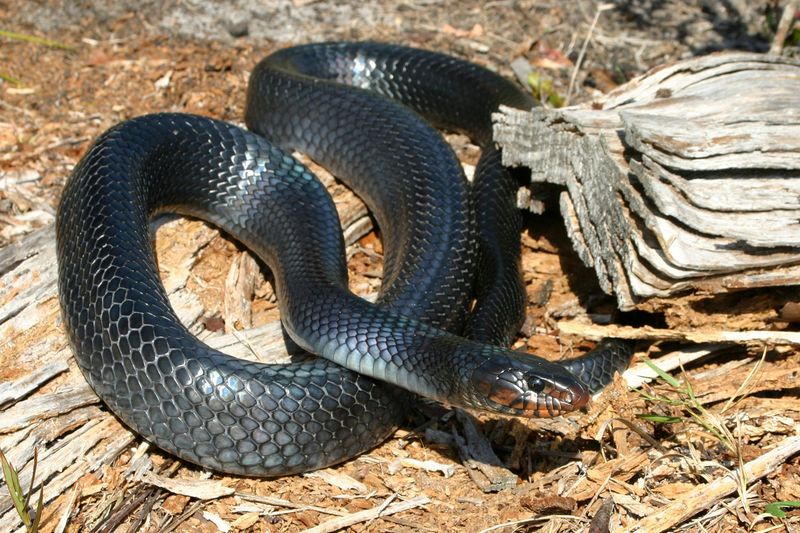
Royalty among reptiles! These impressive snakes can stretch over 8 feet long, making them North America’s longest native snake. Their scales shimmer with a purplish-blue iridescence in sunlight.
Gentle giants of the serpent world, indigos rarely bite humans despite their imposing size. Sadly, these magnificent creatures are federally threatened due to habitat loss.
3. Black Rat Snake
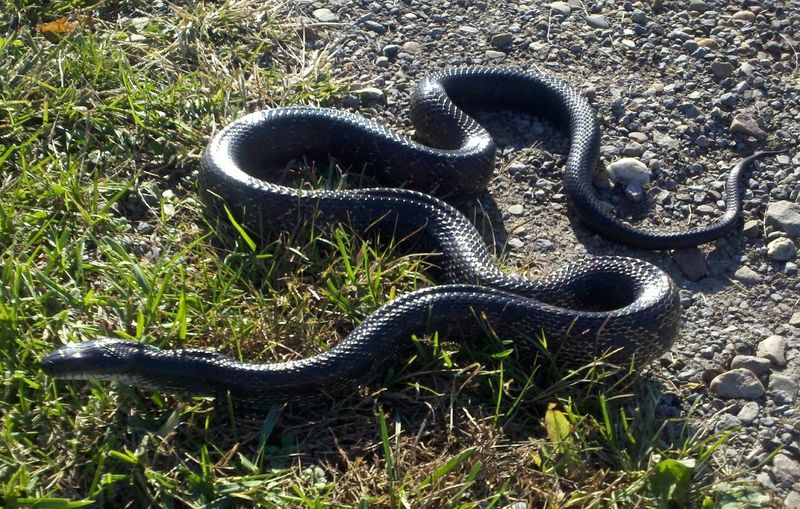
Master climbers with a taste for heights! These woodland acrobats can scale vertical tree trunks and even brick walls using tiny ridges on their belly scales.
Young snakes wear a patterned disguise that fades to solid black with age. Despite their size (up to 7 feet), they’re completely harmless mousers that sometimes move into barns and attics.
4. Eastern Black Kingsnake
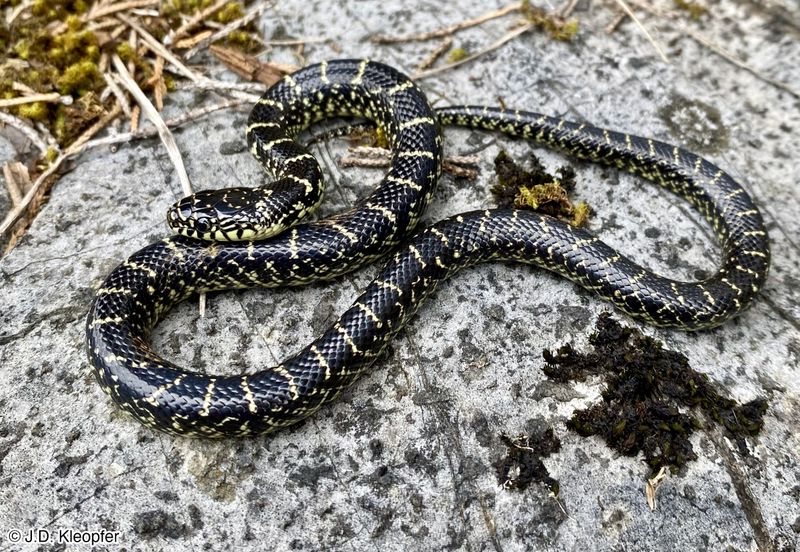
Nature’s snake-eating superheroes wear shiny black scales with delicate yellow or white chain-like patterns. Their secret weapon? Immunity to venomous snake toxins!
These muscular constrictors hunt and devour other snakes, including rattlesnakes and copperheads. Having them around actually reduces your chances of encountering dangerous serpents near your home.
5. Black Swamp Snake

Tiny aquatic jewels that rarely exceed 15 inches! Their glossy ebony backs contrast dramatically with bright red bellies – a secret splash of color they keep hidden underwater.
Spending most of their lives in shallow marshes and cypress swamps, these secretive swimmers hunt tadpoles and tiny fish. Completely harmless to humans, they’ll release a musky odor when handled.
6. Ring-Necked Snake

Jewelry-wearing miniatures with a vibrant secret! Flip these pencil-thin beauties over to reveal a stunning belly of yellow, orange, or red.
Their namesake necklace – a bright band just behind the head – makes identification easy. Rarely exceeding 15 inches, these shy creatures specialize in eating earthworms and salamanders. They’re completely harmless to humans.
7. Black Racer (Northern)
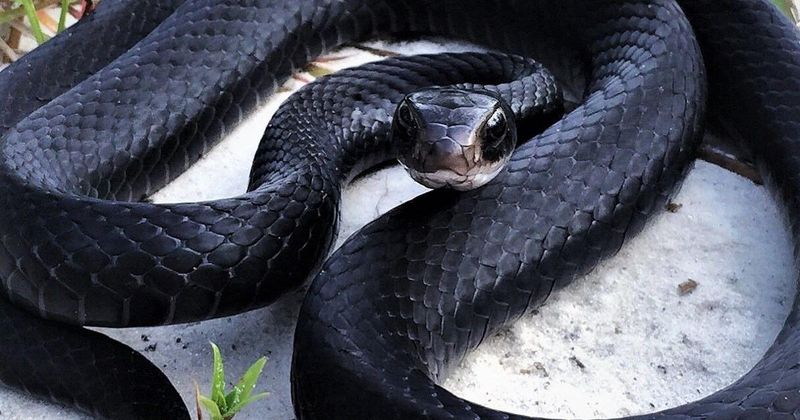
Speed demons of the snake world! These glossy athletes can outpace a walking human and have been clocked at nearly 4 mph during escape.
Unlike their southern cousins, northern racers often show hints of blue-gray along their bodies. Don’t be fooled by their defensive display – despite the tail-shaking and mock strikes, their bite is harmless.
8. Western Mud Snake
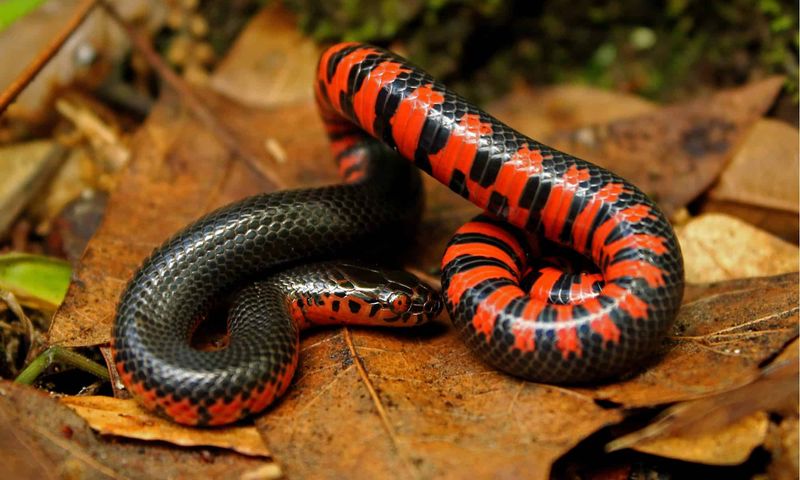
Nature’s candy cane wears business black on top and party red underneath! These aquatic specialists boast some of the most dramatic coloration in the snake world.
Masters of muddy waters, they use their pointed tails to probe for prey in soft sediment. Though they can reach impressive sizes (up to 5 feet), they’re incredibly docile and rarely encountered by humans.
9. Black Pine Snake
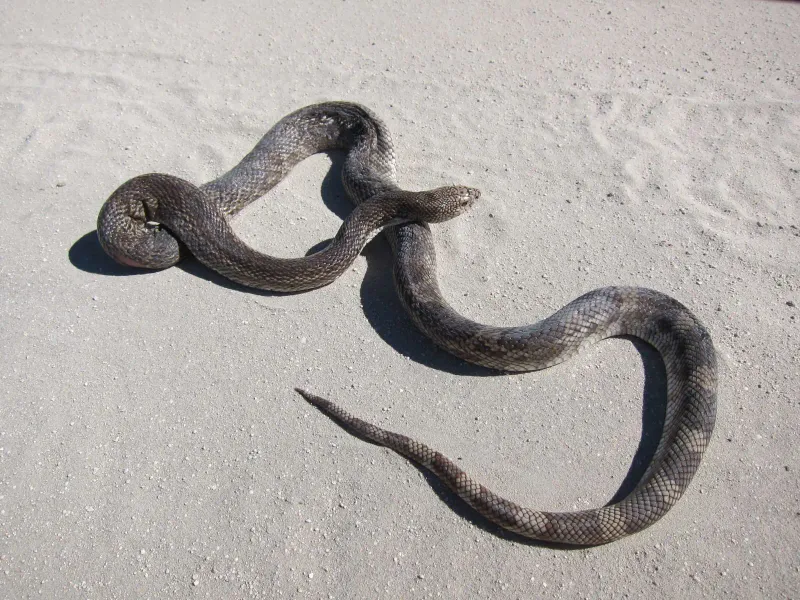
Underground architects with attitude! These muscular burrowers excavate extensive tunnel systems in sandy soils, sometimes stealing gopher tortoise burrows.
When threatened, they put on quite a show – inflating their bodies, hissing loudly, and vibrating their tails. Despite the dramatic performance, they’re non-venomous. Their rough, keeled scales give them a distinctive matte appearance.
10. Mexican Black Kingsnake

Obsidian jewels of the Southwest! These snakes sport some of the glossiest, most uniformly black scales of any serpent – like polished onyx come to life.
Popular in the pet trade for their striking appearance and docile nature. In the wild, they’re formidable hunters that can take down rattlesnakes. Their constrictive squeeze is surprisingly powerful for their medium size.
11. Eastern Hognose Snake
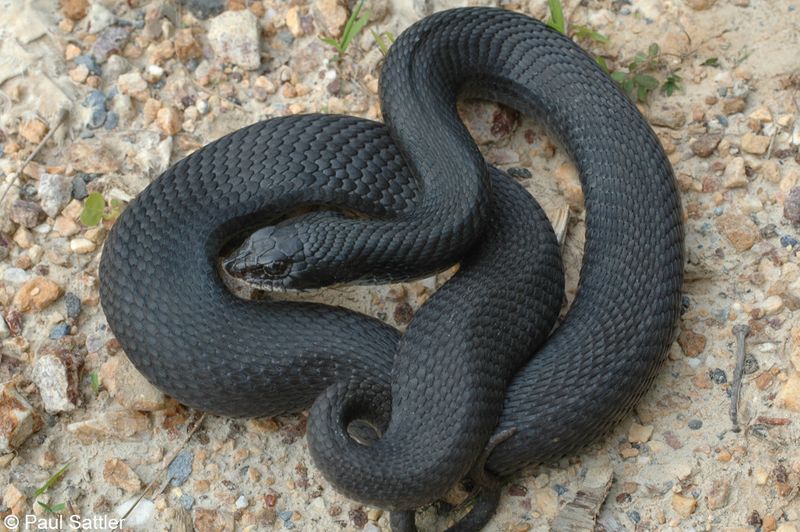
Hollywood’s top snake performers know how to put on a show! When feeling threatened, they flare their necks like cobras, hiss loudly, and may strike without biting.
If intimidation fails, they roll onto their backs, tongue lolling out in a full theatrical act. Some are even solid black in color, but despite the drama, they pose no threat to humans.
12. Black Speckled Kingsnake

Starry night patterns dance across these muscular serpents – tiny white or yellow flecks scattered on a midnight-black canvas. Each scale might hold a single light speck.
Like their kingsnake cousins, they’re immune to rattlesnake venom and happily make meals of other snakes. Found primarily in the central US, they’re beneficial predators that help control rodent and snake populations.
13. Cottonmouth (Water Moccasin)
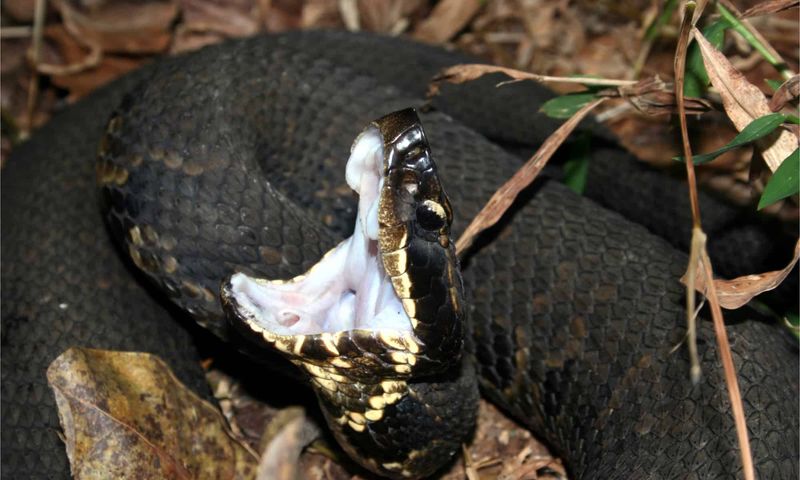
Warning: Dangerously venomous! These chunky water-lovers get their name from the startling white lining they flash when opening their mouths in warning.
Though some appear almost solid black, most show subtle banding patterns. Unlike harmless water snakes, cottonmouths swim with their entire bodies floating on the surface. Their venom can cause severe tissue damage and requires immediate medical attention.


